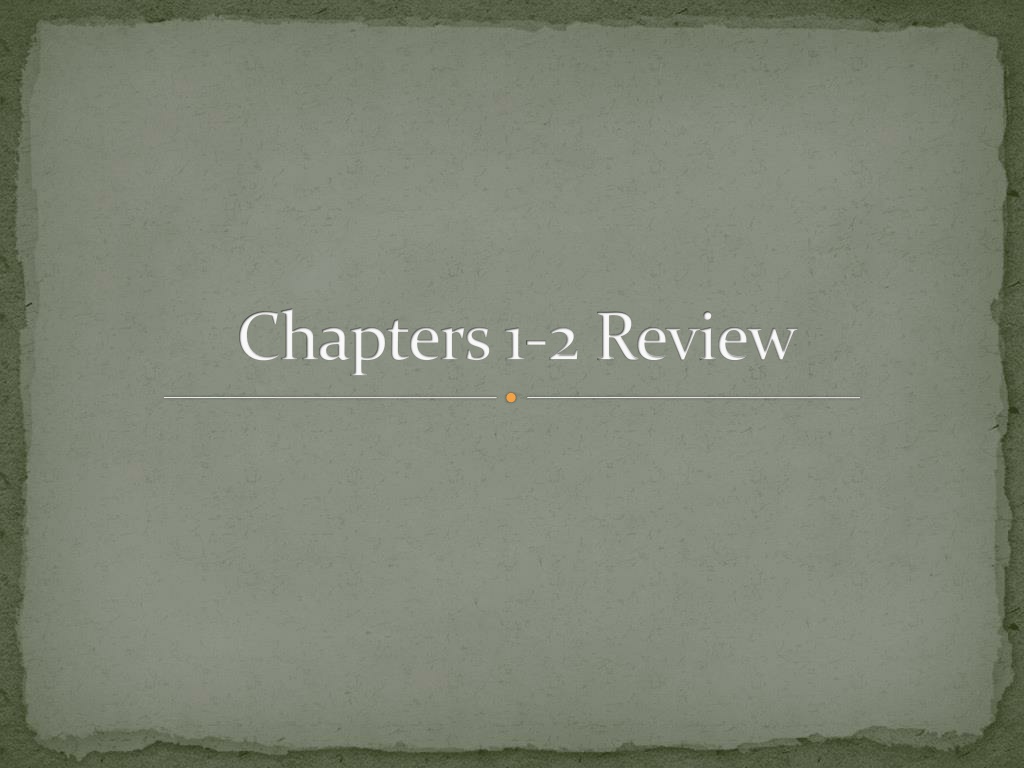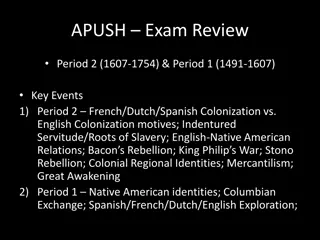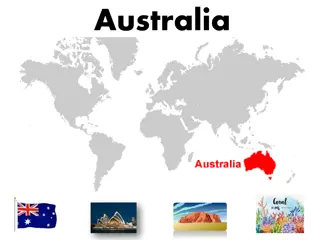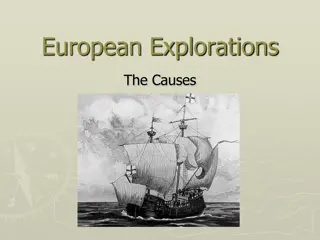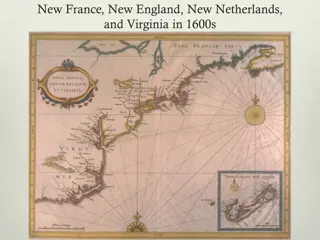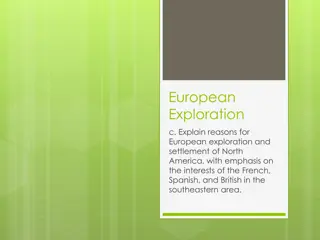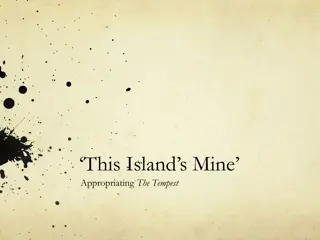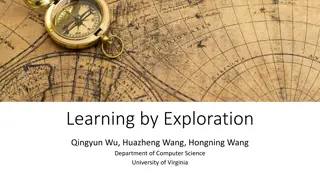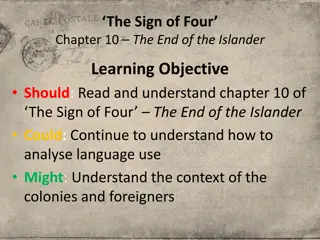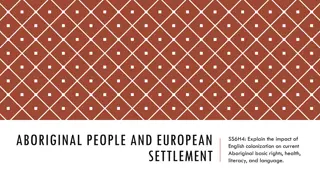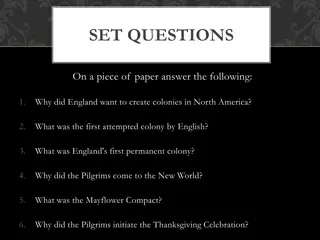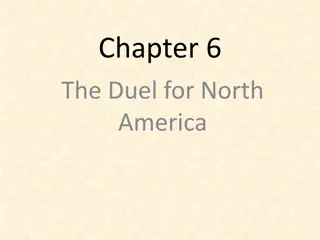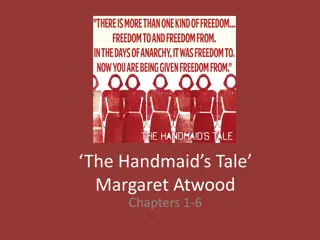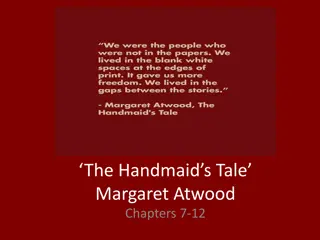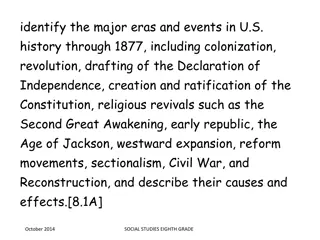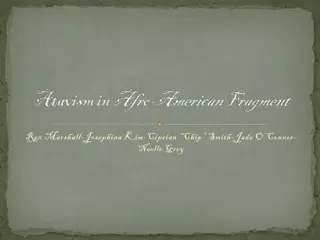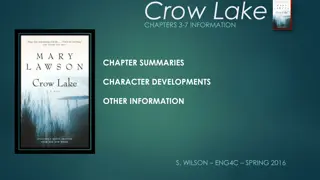Exploration and Colonization in the New World: Chapters 1-2 Review
European exploration and colonization of the New World were driven by factors such as the search for new trade routes, desire for wealth, and spreading of religion. The consequences of exploration included the spread of disease, slave trade, and cultural exchanges between the Eastern and Western hemispheres. Spain built a powerful empire with systems like Encomienda, while England emerged as a naval power after defeating the Spanish Armada. The characteristics of the English Empire varied, including charter colonies, proprietorships, and royal colonies.
Download Presentation

Please find below an Image/Link to download the presentation.
The content on the website is provided AS IS for your information and personal use only. It may not be sold, licensed, or shared on other websites without obtaining consent from the author. Download presentation by click this link. If you encounter any issues during the download, it is possible that the publisher has removed the file from their server.
E N D
Presentation Transcript
Chapter #1 Exploration
Reasons for Exploration of New World European demand for more and cheaper products Search for New Routes to the East- Ottomans had a monopoly on trade routes The 3 G s- Gold, Glory, Gospel (Explorers wanted Gold and Glory/ missionaries wanted to convert Natives
Effects of Exploration Slave Trade needed for sugar plantations in the West Indies Spread of disease- Again, Guns, Germs, and Steel killed 90% of population Conflicting Claims- many European nations claimed the same area based on similar explorations a) Papal Line of Demarcation (1493)- Pope Alexander VI divided the new world between Spain and Portugal b) Treaty of Tordesilla (1494), which gave most of the new world in the Americas except Brazil to Spain. The Colombian Exchange: Dramatically widespread exchange of animal, plants, culture (including slaves), diseases, and ideas between the Eastern and Western hemispheres. Effects: Cultural Diffusion, changes two worlds forever
Spain Builds an Empire Encomienda System - allowed the government to commend , or give, Indians and land to certain colonists in return for the promise to try to Christianize them It really was slavery. Black Legend - false concept held that the conquerors merely tortured and killed the Indians, stole their gold, infected them with smallpox, and left little but misery behind. Somewhat true They grafted their culture, laws, religion, and language into the native societies. This laid the foundation for the modern- day Spanish speaking nations. The Spanish also incorporated indigenous culture with their own, rather than isolating and shunning the Indians as the English did Intermarriage
Chapter 2 Planting of English America
England Emerges Spanish Armada is defeated by England; England emerges as a naval power Also brings a Protestant nation to the forefront (Spain was Catholic)
Characteristics of English Empire Types of Colonies: Charter- chartered trading companies made up of stock- holders who shared both the profits and the losses of the colonies (Virginia). Proprietorships- Royal grant of land to Royal favorites (Maryland- Lord Baltimore) Royal- ruled by the Crown of England (Georgia)
Chesapeake Bay Made up of Virginia and Maryland Indentured servants were early labor source until Bacon s Rebellion John Rolfe (Jamestown) introduces tobacco and saves colony Representative self- government- 1619- House of Burgesses (Early form of self-government) Powhattan Confederacy: Neighboring Native American Tribe, fell victim to 3 D s. Disease, Disorganization, Disposability
MD and VA key terms MD (Lord Baltimore) Proprietorship Acts of Toleration guarantees religious toleration to all Christians ONLY Not to Jews Indentured Servants: Worked a period of 5-7 years in exchange for passage to America
Georgia: The Buffer Colony Georgia Last of the original 13 colonies formed in 1733 originally as a buffer between aristocratic South Carolina and Spanish Florida and French Louisiana. Also a penal colony for debtors James Oglethorpe became the leading statesman in Georgia, repelled Spanish attacks Later, in 1750, Georgia adopts the plantation system modeled after SC
Thats it! Subscribe to my channel Help spread the word Questions? Comments? Ideas for videos? Email or leave in comments Subscribe for APUSH nuggets of wisdom!
